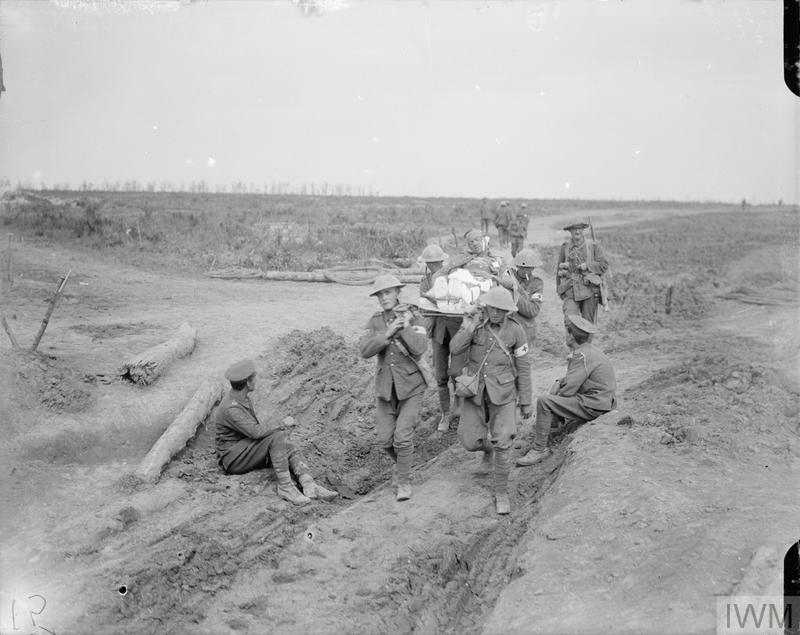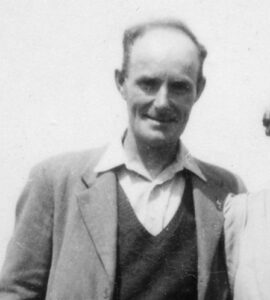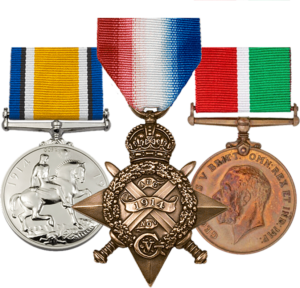George and his older brother James enlisted into the army together on 10 November 1915, joining the 10th (Scottish) Battalion of The King’s (Liverpool Regiment) and being given consecutive serial numbers, 5599 for James (later changed to 670359) and 5600 for George. At the time, 18-year-old George still lived at home and was described as 5 feet 10 inches tall, weighing 57 kg, and with a ‘rather poor’ physical development. It was noted that he had a ‘bad shaped’ chest.
After a period of training the brothers embarked for France at Southampton on 10 April 1916, arriving at Rouen the next day. George’s only French was ‘Voulez vous promenade avec moi s’il vous plait’, and he made his way to join the 1/10th Battalion on 18 April. This was part of the 166th Brigade of the 55th Division. He found them manning a section of the trenches near Bellacourt, to the west of Arras. This was at that point a relatively quiet section of the line.
The battalion was relieved on 11 May and moved into the divisional reserve. For the next eight days the men undertook training and were inspected by a general. They then returned to the lines for another spell, during which they did a lot of work to improve the conditions of the trenches. They were relieved again after eight days. This cycle of manning the trenches in a relatively quiet area, suffering sporadic artillery attacks, and suffering a few casualties from enemy fire, continued until the end of July.
Battle of the Somme
The battalion had so far managed to avoid the carnage that had been unleased in the Battle of the Somme – launched on 1 July – but over several days at the end of the month moved about 20 miles south to Ville-sur-Ancre near Mericourt.
After a week in the reserve, they moved on 8 August to take up a place in the front line opposite the village of Guillemont. It had been in German hands for two years and was heavily fortified and well defended, aided by the flat land to either side. A first attack on the 23 July by the 18th King’s had failed, and a second on the 30th by the regiment’s three ‘pals’ battalions resulted in such heavy losses that it became known as Liverpool’s blackest day (see the history of Leslie Evans for a description).
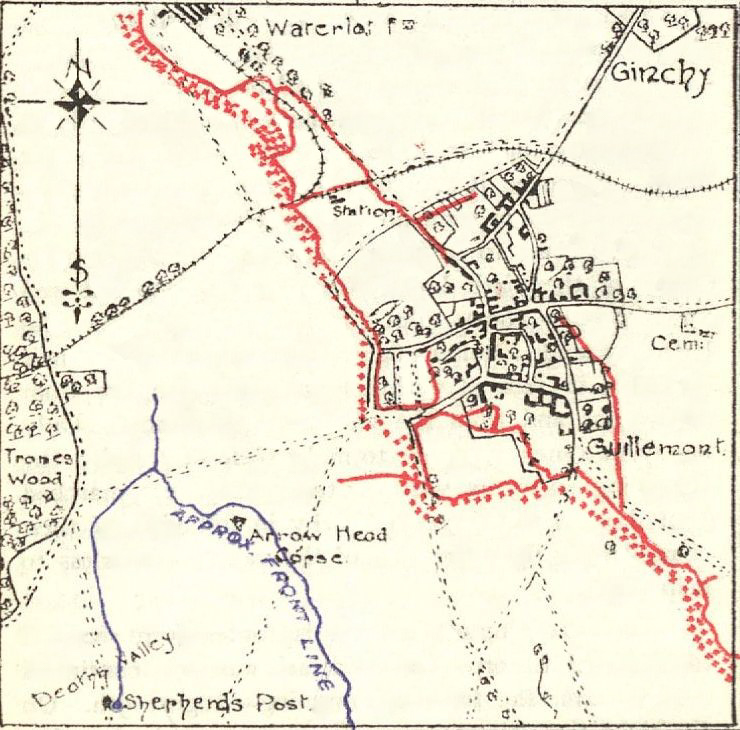
The 1/10th took up position at 4.20am on the morning of 9 August. The battalion attacked the village after a hurried bombardment and were met by massed machine-gun fire. The positions were eventually captured but causalities were very heavy, and the battalion was withdrawn that same evening. George was one of those wounded, receiving shrapnel wounds in the neck and back, and repatriated home two days later.
Return to France
After a considerable period of recovery, George returned to France to join the 2/10th Battalion on 21 March 1918. He immediately appeared to serve as the Brigade ‘gas guard’ for the next week. At this time the battalion was being held in brigade reserve at Estaires, about 12 miles to the west of Lille. At the beginning of April, they moved by foot and by train about 50 miles south to Saint-Léger-lès-Authie, beginning a series of training manoeuvres in this general area that lasted until the 20th. That evening they boarded busses to travel 30 miles north to Burbure, arriving the next day. After being inspected by the Divisional General, they proceeded into the line at Festubert on the 22nd. Their stint was short, and just four days later they were relieved and moved back to encampments at Vaudricourt. On 30 April the battalion was disbanded and absorbed into the 1/10th, who had sustained such losses during the Battle of Estaires that they had virtually ceased to exist.
The new combined battalion went straight into the line near Vaudricourt. They settled quickly into the routine of manning the trenches in a relatively quiet area, suffering sporadic artillery attacks, and suffering a few casualties from enemy fire. They withdrew back into billets on 15 May for five days in reserve, where time was filled with training, bathing, recreational activities, and evening concerts. This cycle continued for the next month, with raiding parties capturing a few prisoners and a couple of low-flying aircraft being brought down. The battalion then suffered an epidemic of influenza, with 200 men having to be evacuated to hospital, including George who was admitted on 24 June 1918. He was fit enough to re-join his unit on 6 July.
The pattern of manning the line followed by spells in reserve continued, with periods of artillery bombardment and gas attacks interspersed with lectures, horse shows, boxing, and football tournaments. This routine was abruptly ended on 3 October when the Germans began a withdrawal, and the battalion was ordered to pursue. Four years of stalemate and trench warfare was over.
On the 5th the Battalion suffered very heavy casualties while trying to cross a canal. The Germans were retreating rapidly, and the battalion was moved by train and by foot over several days, passing through newly liberated French towns. They joined the line at Froidmont on the 21st, where they suffered intermittent shelling. On 30 October there was a very heavy gas bombardment during the early hours of the morning. George was admitted to hospital that day and spent the next two weeks in a series of hospitals that catered for gas victims. He was fit enough to return to his unit on 18 November, seven days after the Armistice had been signed.
The bulk of the army remained in position until March 1919 and it could be certain that the Germans had withdrawn back behind their own borders. This time was filled with a mix of training, sports, work parties, parades, boredom, and social events. Notably on 7 December the battalion was part of the 55th Division’s guard of honour to welcome HM The King and the Prince of Wales at Tournai. On 15 December they moved to Sint-Job, about 18 miles west of Brussels where they remained into March. George was sent to the Prees Heath Dispersal Area for demobilisation into the Class Z Reserve on 25 April.
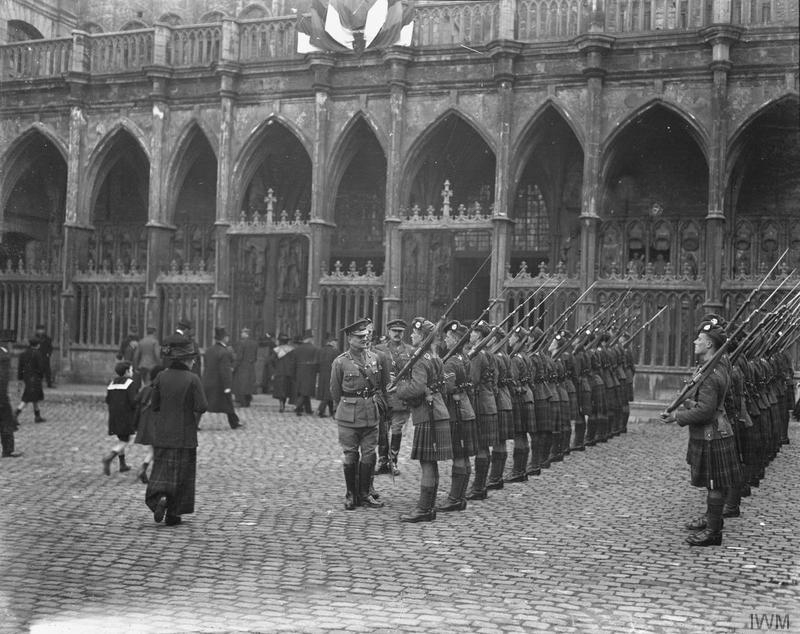
Units
- 3/10th (Scottish) Battalion, The King’s (Liverpool Regiment) (1915-1916)
- 2/10th (Scottish) Battalion, The King’s (Liverpool Regiment) (1918)
- 1/10th (Scottish) Battalion, The King’s (Liverpool Regiment) (1918)
Medals



